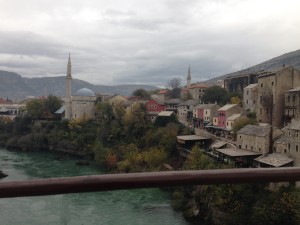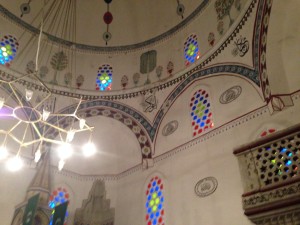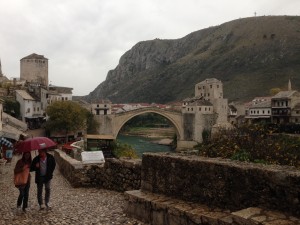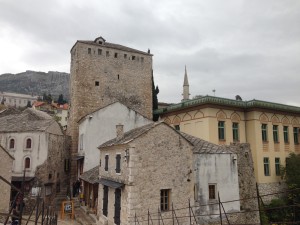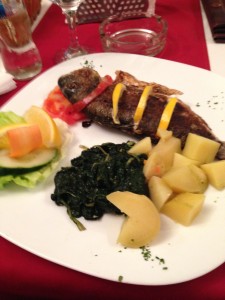If you’ve been reading my blog lately, you know that my upcoming novella, The Pillar, is set in 15th century Bosnia. The story was inspired by a few days I spent in Bosnia & Herzegovina last year. I’ve already posted pictures from the country’s fascinating capital, Sarajevo. But The Pillar is set in a fictional town called Zidar, which is based loosely on the real town of Mostar.
The photo at the top of this entry tells you right away why Mostar is a popular tourist destination. Gorgeous, isn’t it?
It was raining the November day I visited, so my photos look like watercolor paintings. Mostar is just as beautiful close-up, with the cobbled streets and multicolored houses.
The city has a long history. One of my favorite places to visit was this beautiful mosque–now a museum. It’s the same mosque you can see on the left side of the photo above. It was built in the 17th century. Here’s the interior:
The courtyard outside the mosque is the direct inspiration for the courtyard in The Pillar where Faris the healer first meets Boro, a dying slave. In real life, there’s no pillar in Mostar–although there is one In a coastal town in Croatia. I’ll share that photo in a later post. You can see the fictional courtyard in Shobana Appavu’s gorgeous cover for The Pillar.
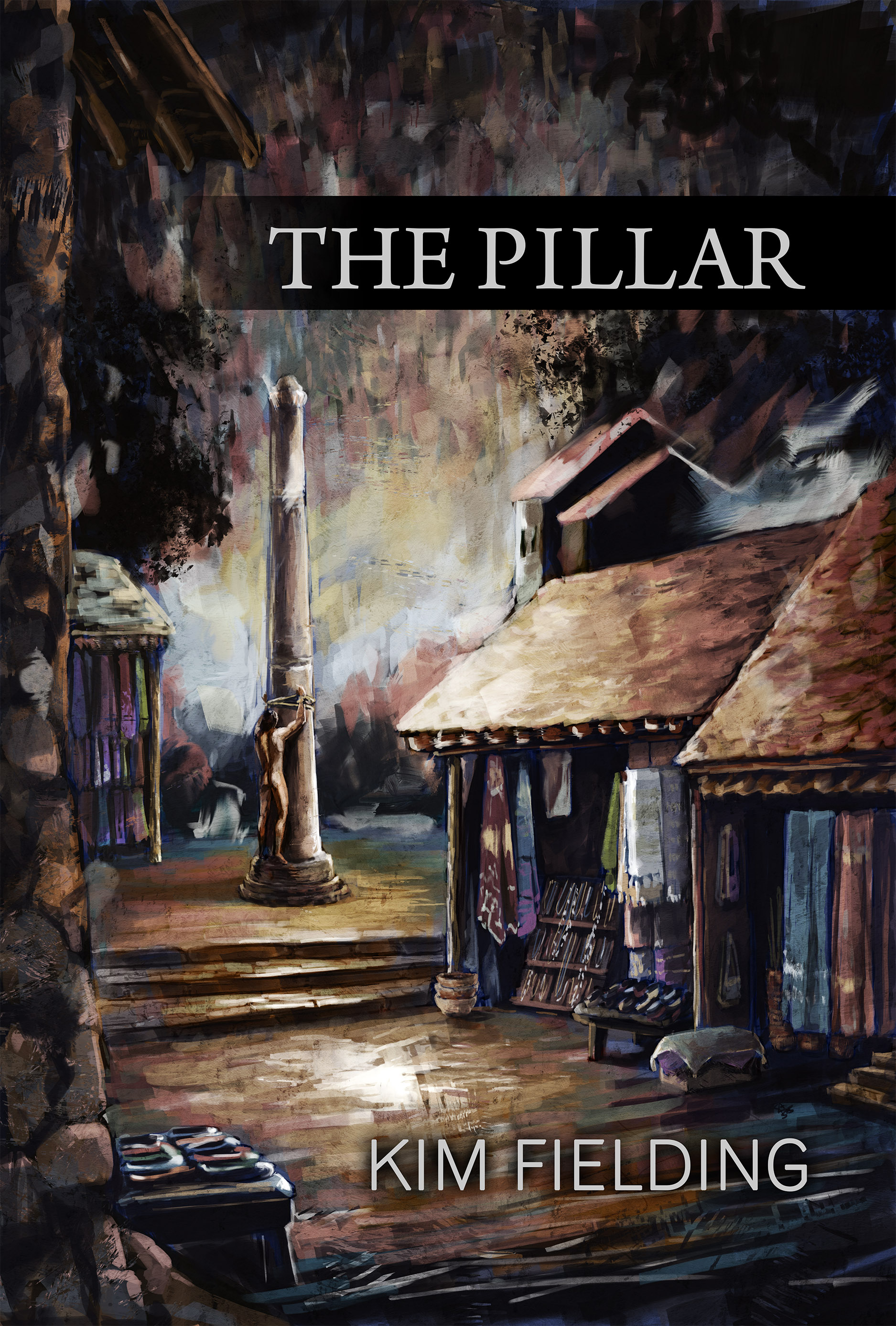
As in much of the rest of the country, some of Mostar’s history is tragic. During the war in the early 1990s, much of the city was under seige. Whereas in Sarajevo, it was mostly Bosnian Serb forces that beseiged the city, in Mostar it was mostly Bosnian Croat forces. Local Bosniaks (Muslims) had to flee or live under terrible conditions, and there was a lot of damage to the city. (I won’t even attempt here to explain the complexities of that war. I’m hardly an expert on the subject anyway. Suffice it to say that I’ve seen enough to understand that the human toll was chilling.)
Perhaps the most heartbreaking damage was the destruction of the Old Bridge (Stari Most), which was built in the 17th century. The town itself was named after the bridge: Mostar means bridgekeeper.
Several years after the war, the bridge was rebuilt using stones from the same quarry as the original, and using the same techniques. It’s a centuries-old tradition for young men to dive into the river from the bridge. Nobody was diving on the chilly day I was there, though!
I took this photo from one end of the bridge. In my book, I describe an important office building. I imagined it looking much like the yellow building you see to the right of the tower.
Unfortunately, the weather wasn’t very conducive that day to lingering by the bridge with some Bosnian coffee. But I did have a very nice meal:
That’s local trout with blitva (sauteed Swiss chard) on the side. Mmm, I love blitva. And yes, my dear American readers, it is customary in Europe for fish to be served whole, eyes and all. For some reason, here in the US we don’t like our dinners looking back at us.
Aside from being proficient in English, the waiters at this restaurant also sailed instantly and effortlessly between three currencies, maintaining the proper exchange rates the whole time.
I really only had half a day in Mostar. I very much hope to return someday soon!


